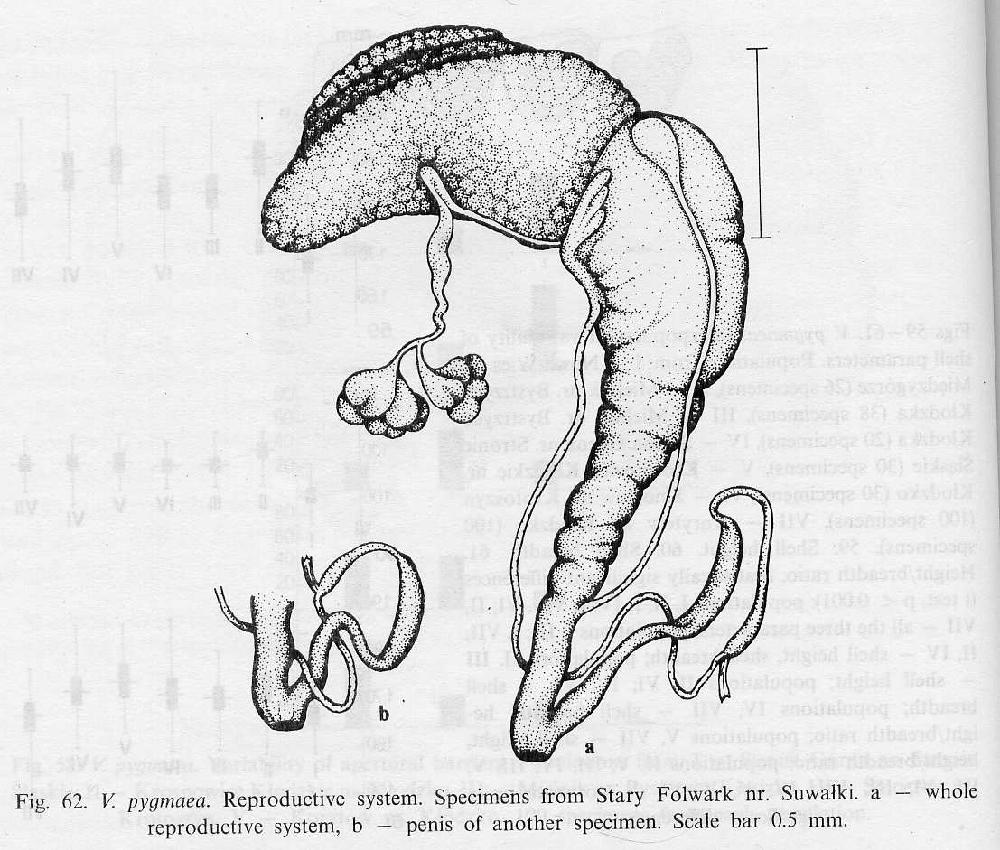
Reproduction
 Like
all of the organisms in the genus Vertigo, the
Vertigo pygmaea are monecious. This means that the
snail has both male and female parts and can reproduce
asexually. This however is not the primary mode of
reproduction for this species as it prefers to reproduce through
cross-fertilization. This promotes genetic variation in
the different organisms unlike asexual reproduction. Cross
fertilization in land snails is done by exchanging sperm bundles
and are then used to fertilize the eggs.
Like
all of the organisms in the genus Vertigo, the
Vertigo pygmaea are monecious. This means that the
snail has both male and female parts and can reproduce
asexually. This however is not the primary mode of
reproduction for this species as it prefers to reproduce through
cross-fertilization. This promotes genetic variation in
the different organisms unlike asexual reproduction. Cross
fertilization in land snails is done by exchanging sperm bundles
and are then used to fertilize the eggs.
The eggs must be kept moist so they are deposited in wet environments out of the dry or hot environment. Some common places to find eggs of the snail are in holes or under rocks and logs.
Unlike some marine species of snails, there is no larval stage for Vertigo pygmaea. This means that the young hatchling is the full adult form and will begin to grow the shell and undergo the process of torsion mentioned in the Nutrition section.
The smaller snail types have been shown to reproduce more effectively producing larger numbers than the snails that are larger. (Carter, et al 1990)
Information on reproduction from (Allegany County Public Schools 2011)
Snails are not the only ones in their habitat, lets learn about the other types in the Interactions section.
Take me back Home!